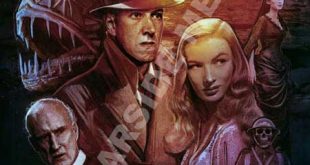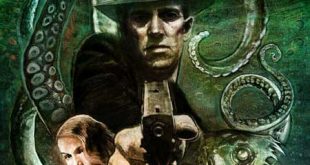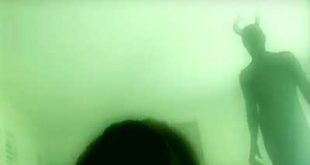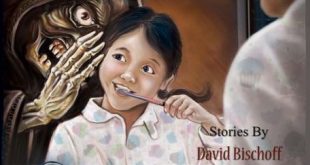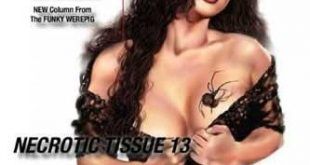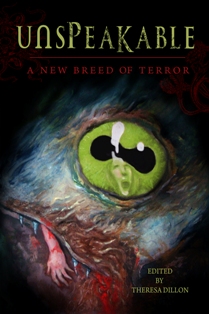 UNSPEAKABLE – A NEW BREED OF TERROR
UNSPEAKABLE – A NEW BREED OF TERROR
Publisher: Blood Bound Books, January 2011
247pgs, $14.95
Until now, these were the creatures that only crawled through the darkest corners of your mind. The ones you refused to name for fear they’d become real. And now, thanks to this book, they are. Unspeakable is twenty four stories filled with things that should not be. They may dwell in mountains or under water. In deep forests or windblown deserts. Perhaps they lurk in the shadows of your very own home. But regardless of origin, these ancient, nameless beasts are awake and they want you.
When you are told you are reading a collection of stories all starring new and unique monsters, you have a certain level of expectation upon reading those stories. You are ready for never-before-visited worlds to be introduced, distinct horrors to be shoved into your face in all of their slobbering, tentacled, soul-eating, nightmare-inducing glory (those of course being examples of what this reader expects when offered New and Improved Monsters). So it was with some disappointment that I read through this anthology. While the stories did present some new and (basically) never-before-seen creatures of darkness, the glimpses I was given of them were too brief, too fleeting for me to appreciate them. They made their grand (or not-so-grand) entrances in the last few words of the stories and then it was over. They were gone. “Monarch of the Seas” presents the glimmer of a mermaid story, but cuts off the tale before any mermaids or similar are truly revealed. “Border Jumper,” while presenting something like a chupacabra (that we just don’t see enough in stories these days) plays it off like they are some wild animal and not really a monster at all. It doesn’t give us time to see anything else in these creatures. Both stories just left with me with too many questions about their creatures of darkness.
Who were they? Were did they come from? What did they want? Would Cthulhu and them be besties? Would Pinhead and the other Cenobites invite them over for tea? A monster sweeping in and killing a house full of people for no reason doesn’t give me enough reason to really be scared of them. Any psychopath can accomplish that kind of violence. I expect more from my horror monsters. And I expect more from my short stories, especially scary ones. I expect there to be a build-up of suspense, mystery, terror, something at least along those lines. I expect, while not a novel’s amount of plot, at least enough beginning, middle, and end that I not only understand what is happening but also why it might be happening and some of what will happen next. Several of these stories failed to give me, as the reader, what I needed from them. In “Stranger in the Woods” the main character and her friends (I use the term loosely) are at a cabin for the weekend and suffering from some very normal, very human melodrama. Suddenly a stranger pops up, a storm blows in, and almost everyone is dead. But their deaths mean nothing as there was no monster-related build-up. They were just some not-so-great people that bought it in the woods, like the group of teenagers without names who get slaughtered before the opening title sequence of a “Friday the 13th” movie.
Other stories left me wanting in different ways. “Cancer on Cat’s Paws” presented a truly horrific take on what a woman’s cancerous tumor really was, but was it really that much of a stretch? Cancer is already a monster, it already weakens and kills people and tears apart families and destroys lives. I wanted more from it than what I already know it can do. “The Ash” was a rather random take on a post-apocalyptic world, where giant, mutated bats have helped disease and poisonous ash along with wiping out the human race. It felt too much like a 1960’s or 1970’s B-grade horror film for me to find it frightening. While I found the language of “Strunke City Derail” rather fascinating, the monster itself was rather forgettable, and while the Lovecraftian overtones of the “Acolyte” were suitably creepy, the ritual scenes went on too long and lost my attention. “The Robe” felt more like a ghost story to me than a monster story, and “Orsini’s Vineyard” felt more like a history lesson than any kind of story at all. “If Love is Not Madness” was much darker than I anticipated from the first few paragraphs. It mentioned the character searching for romantic “excitement” but what she ended up getting was graphic sexual violence. I got too stuck on wondering why she wasn’t freaking out more about what was being done to her and forgot that it was supposed to be a monster tale at all. Nothing much happened in “Wind, Winter, Wendigo.” People died, a kid disappeared, and a bunch of old men sat around and did nothing. And while things did occur in “The Midnight Mass,” it felt so much like one of those ‘jump’ stories from the old “Scary Stories to Tell in the Dark” books that I couldn’t stop expecting the story to end abruptly with someone jumping in my face and yelling.
My disappointments aside, there were also stories in this collection that I found very enjoyable, even downright creepy. They gave enough background detail that I cared and enough plot detail that I understood what I was being told and why it was terrifying. “Memory Thief” felt like a medieval fairy tale with an evil fae creature stealing away memories, while “Mato Tipila” gave me a Native American legend, a bloodthirsty bear-faced mountain, and some nasty deaths. Lovecraftian in its tone like the “Acolyte”, “Gates of Perception” not only provided a creepy setting and a doorway to an unfathomable demon world, it gave a new and terrifying reason not to try drugs. While the time shifts in “Field Test” were a bit confusing, the monster born from a man-made biological weapon idea is suitably frightening. It was one of the reasons I also enjoyed “The Booglin.” Though I think I also enjoyed that one because it was a creature built from boogers and deep inside I find boogers funny. While the cancer-related “Cancer on Cat’s Paws” didn’t work for me, the similar themed “The Deal” did, as it went after the caretakers – doctors, nurses, social workers – and presented them as the monsters, instead of the disease. “Forgotten Lake” took a timeless legend, that of a prehistoric creature living in a lake, and turned it on its head by making the lake itself the monster. “The City Consumed by Divine Fire and Buried Beneath the Sand” also took a legend, this one the Bible story of the city of Sodom, and gave it new life. It gave humans, in all their lust and greed and anger and deceit, the chance to be the monsters. “Deadheads,” with its dragon/airplane that devours souls, was a story for our time and built upon our fear of things going wrong while flying. In the tradition of Stephen King, “The Worm of the Waste” presented a monster living amidst an industrial wasteland. And perhaps creepiest of all, “Where They Come Out” was really nothing more than an infestation of bugs. Millions upon millions of bugs. It was scary because it was so relatable, because none of us want to be infested by millions of bugs. Creepy, crawly, icky little bugs.
Overall, while the story quality was uneven (and while there were some basic punctuation/spelling/grammar errors that were distracting but a careful line edit could probably fix) I found this collection of stories readable but not remarkable. For those looking for a light horror read or a book to pass a few evenings I might recommend it, but for readers who need more complexities, actions, and horror, it wouldn’t be the first anthology I’d suggest.
 Horror News | HNN Official Site | Horror Movies,Trailers, Reviews
Horror News | HNN Official Site | Horror Movies,Trailers, Reviews
